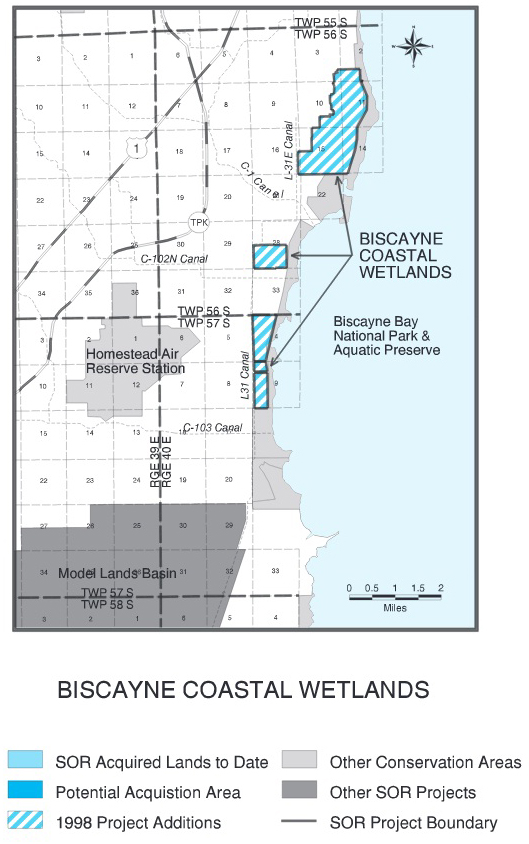
Natural Areas Protection
Find the best accommodation deals in Miami
Maintaining or improving water quality and natural habitat in Biscayne Bay and adjoining coastal wetland areas requires a combination of preservation, acquisition, restoration and enhancement of remaining environmentally sensitive lands. It is also important to minimize the impact of development along the shoreline and in the Bay watershed, and eliminate past development and drainage practices that are not environmentally sustainable.
The Biscayne Bay Regional Restoration Coordination Team (BBRRCT) has developed an action plan to address the urgent need for protecting and restoring the quality of natural areas surrounding the Bay. The primary management tools for accomplishing this goal are the numerous local, state and federal regulatory programs already in place. There are also regional water management and land use planning activities in progress, such as CERP or water supply plans, that are likely to affect Biscayne Bay and provide opportunities for restoring estuarine and wetland habitats and reserving the minimum freshwater needed for a healthy functioning natural system.
BBRRCT has established a series of conservation objectives grouped in five main program areas – reducing pollution to maintain or improve water quality; improving fisheries resources; improving water management; restoring and preserving habitat for fish and wildlife; and maintaining biodiversity by protecting imperiled species.
Land acquisition
Miami-Dade benefits from the work of several effective land acquisition programs and organizations.
about the continuing loss of pinelands and other natural areas, Miami-Dade voters in 1990 approved a property tax to fund the acquisition, protection and maintenance of significant natural sites. Since then, the county’s Environmentally Endangered Lands (EEL) program has acquired more than 21,000 acres, protecting key conservation sites from development and insuring they will continue to thrive as natural habitats. In addition to rock ridge pineland, the program has helped protect tropical hardwood hammock, freshwater and coastal wetlands, and other important natural sites. To stretch available funds, EEL seeks matching funds and partners. The State of Florida’s Preservation 2000 and Florida Forever programs have been important sources of matching funds for EEL. Miami-Dade County’s Building Better Communities bond program, approved by voters in 2004, will also support conservation of parks and natural areas.
The Trust for Public Land also works closely with landowners, community residents and government agencies to acquire private land and establish conservation easements, preserving land as parks, preserves and other natural places, and helping ensure livable communities for generations to come. During the past decade TPL has helped preserve a number of important sites in Miami-Dade County, including Bayfront lands at the Deering Estate in South Dade, Oleta River State Park in the northern Bay, and Miami Circle site at the mouth of the Miami River, among others. For information contact Amy Condon at The Trust for Public Land, 305-667-0409

